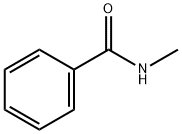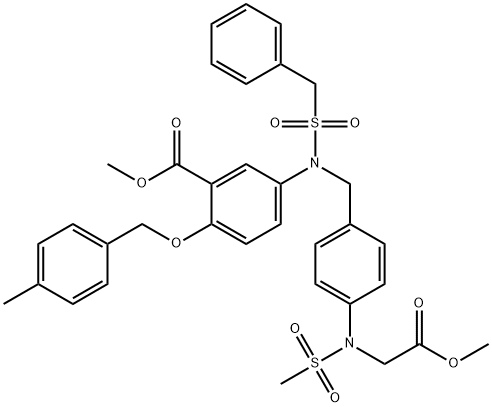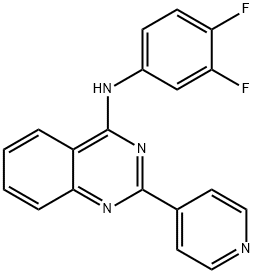ML216
Synonym(s):1-(4-Fluoro-3-(trifluoromethyl)phenyl)-3-(5-(pyridin-4-yl)-1,3,4-thiadiazol-2-yl)urea
- CAS NO.:1430213-30-1
- Empirical Formula: C15H9F4N5OS
- Molecular Weight: 383.32
- MDL number: MFCD24849400
- SAFETY DATA SHEET (SDS)
- Update Date: 2024-11-19 23:02:33

What is ML216?
Description
Bloom (BLM) helicase is a DNA unwinding enzyme important for DNA repair in the homologous recombination pathway. Mutations of the BLM gene result in reduced BLM helicase activity that is associated with the rare genetic disorder, Bloom’s Syndrome, and a predisposition to developing cancer. ML-
The Uses of ML216
ML216 has been used in cell proliferation assays.
The Uses of ML216
Bloom (BLM) helicase is a DNA unwinding enzyme important for DNA repair in the homologous recombination pathway. Mutations of the BLM gene result in reduced BLM helicase activity that is associated with the rare genetic disorder, Bloom’s Syndrome, and a predisposition to developing cancer. ML-216 is the first identified small molecule inhibitor of BLM helicase (IC50 = 1.8 μM) that is 28-fold selective against the related helicases RECQ1, RECQ5, and E. coli UvrD (IC50s ≥ 50 μM). At 25-50 μM, ML-216 has been shown to dose-dependently inhibit the proliferation of BLM-expressing PSNF5 fibroblast cells but not BLM-deficient PSNG13 fibroblast cells.[Cayman Chemical]
Definition
ChEBI: 1-[4-fluoro-3-(trifluoromethyl)phenyl]-3-(5-pyridin-4-yl-1,3,4-thiadiazol-2-yl)urea is a member of ureas.
Biochem/physiol Actions
ML216 is a membrane permeable selective inhibitor of Bloom (BLM) helicase, a member of the RecQ DNA helicase family. Bloom′s syndrome, caused by a mutation in BLM, is associated with susceptibility to cancer, growth retardation, immunodeficiency, sunlight sensitivity, and fertility defects. ML216 is selective for BLM over other members of the RecQ family, especially in vivo, and appears to act at the BLM-nucleic acid substrate binding site, inhibiting DNA binding and blocking BLM′s helicase activity. ML216 could be useful in studies of tumor cells depending on the ALT (alternative lengthening of telomeres) mechanism for telomere maintenance rather than on telomerase, which are proposed to be susceptible to BLM inhibition.
Properties of ML216
| Density | 1.583±0.06 g/cm3(Predicted) |
| storage temp. | 2-8°C |
| solubility | DMSO:29.0(Max Conc. mg/mL);75.65(Max Conc. mM) |
| form | powder |
| pka | 6.40±0.50(Predicted) |
| color | light orange to dark orange |
Safety information for ML216
| Signal word | Danger |
| Pictogram(s) |
 Skull and Crossbones Acute Toxicity GHS06 |
| GHS Hazard Statements |
H301:Acute toxicity,oral H413:Hazardous to the aquatic environment, long-term hazard |
| Precautionary Statement Codes |
P273:Avoid release to the environment. |
Computed Descriptors for ML216
New Products
(S)-3-Aminobutanenitrile hydrochloride 4-Methylphenylacetic acid N-Boc-D-alaninol N-BOC-D/L-ALANINOL Tert-butyl bis(2-chloroethyl)carbamate 3-Morpholino-1-(4-nitrophenyl)-5,6-dihydropyridin- 2(1H)-one Furan-2,5-Dicarboxylic Acid Tropic acid 1-Bromo-3,5-Di-Tert-Butylbenzene S-2-CHLORO PROPIONIC ACID ETHYL ISOCYANOACETATE 2-Bromo-1,3-Bis(Dimethylamino)Trimethinium Hexafluorophosphate 4-IODO BENZOIC ACID 3-NITRO-2-METHYL ANILINE 1-(2,4-DICHLOROPHENYL) ETHANAMINE (2-Hydroxyphenyl)acetonitrile 4-Bromopyrazole 2-(Cyanocyclohexyl)acetic acid 4-methoxy-3,5-dinitropyridine 1-(4-(aminomethyl)benzyl)urea hydrochloride 2-aminopropyl benzoate hydrochloride diethyl 2-(2-((tertbutoxycarbonyl)amino) ethyl)malonate tert-butyl 4- (ureidomethyl)benzylcarbamate Ethyl-2-chloro((4-methoxyphenyl)hydrazono)acetateRelated products of tetrahydrofuran








You may like
-
 ML216 >95% CAS 1430213-30-1View Details
ML216 >95% CAS 1430213-30-1View Details
1430213-30-1 -
 BLM Helicase Inhibitor, ML216 CAS 1430213-30-1View Details
BLM Helicase Inhibitor, ML216 CAS 1430213-30-1View Details
1430213-30-1 -
 1975-50-4 98%View Details
1975-50-4 98%View Details
1975-50-4 -
 2-HYDROXY BENZYL ALCOHOL 98%View Details
2-HYDROXY BENZYL ALCOHOL 98%View Details
90-01-7 -
 2-Chloro-1,3-Bis(Dimethylamino)Trimethinium Hexafluorophosphate 221615-75-4 98%View Details
2-Chloro-1,3-Bis(Dimethylamino)Trimethinium Hexafluorophosphate 221615-75-4 98%View Details
221615-75-4 -
 61397-56-6 CIS BROMO BENZOATE 98%View Details
61397-56-6 CIS BROMO BENZOATE 98%View Details
61397-56-6 -
 14714-50-2 (2-Hydroxyphenyl)acetonitrile 98+View Details
14714-50-2 (2-Hydroxyphenyl)acetonitrile 98+View Details
14714-50-2 -
 118753-70-1 98+View Details
118753-70-1 98+View Details
118753-70-1